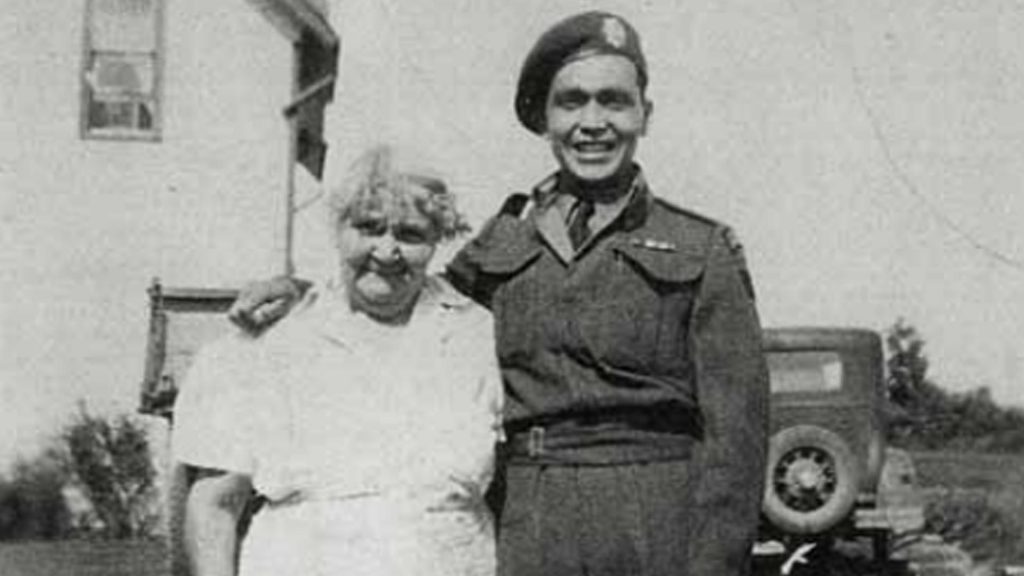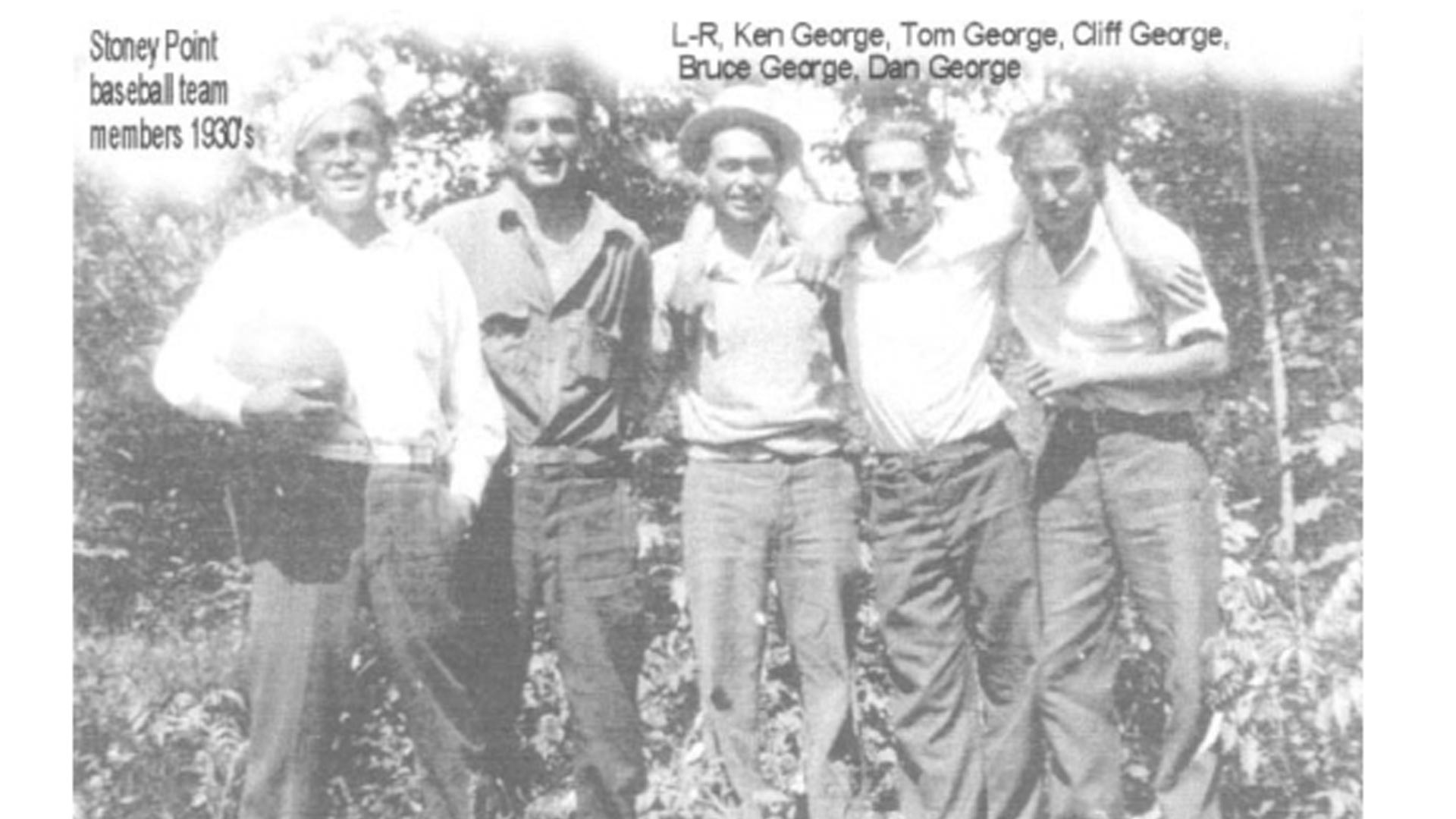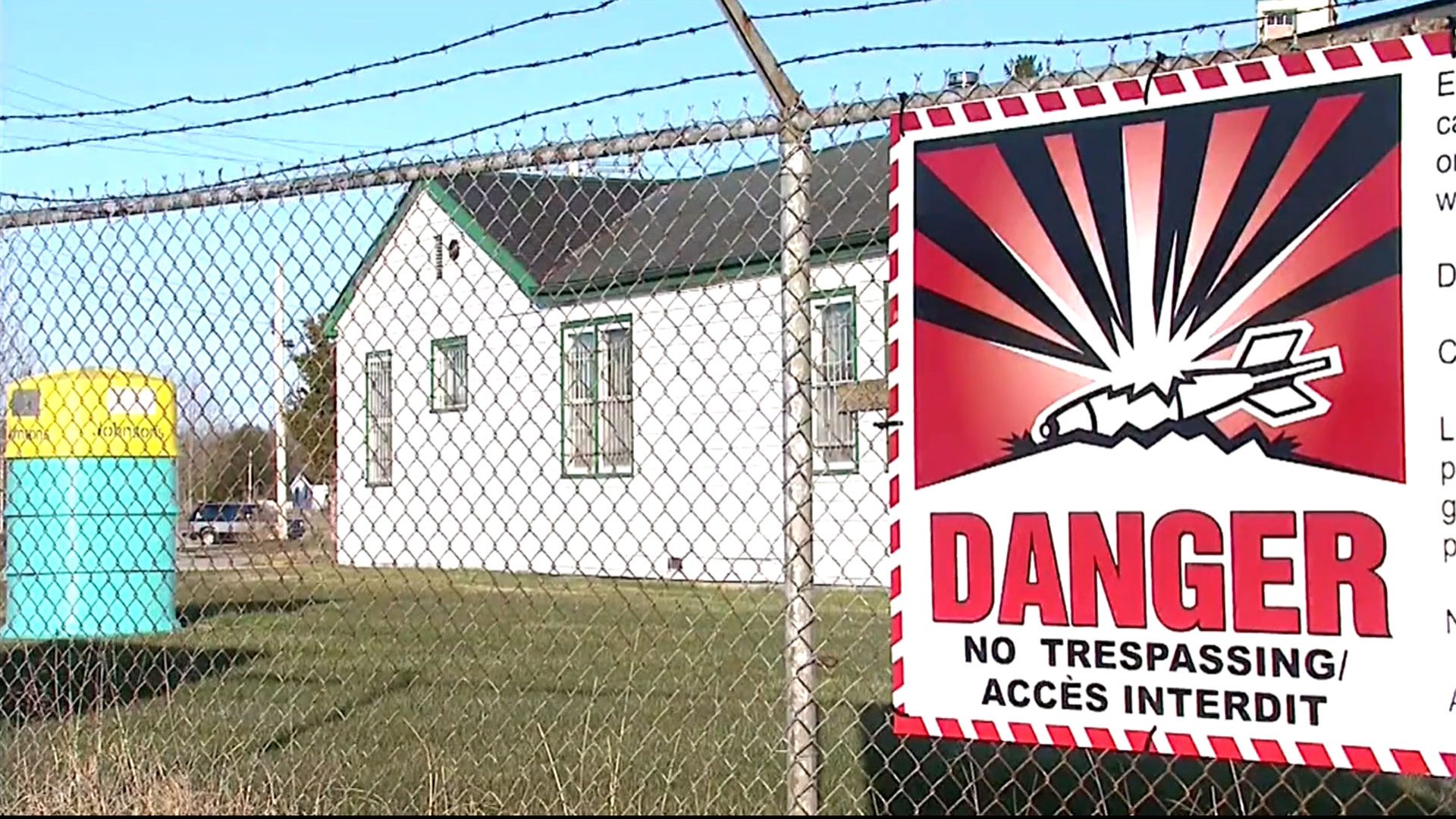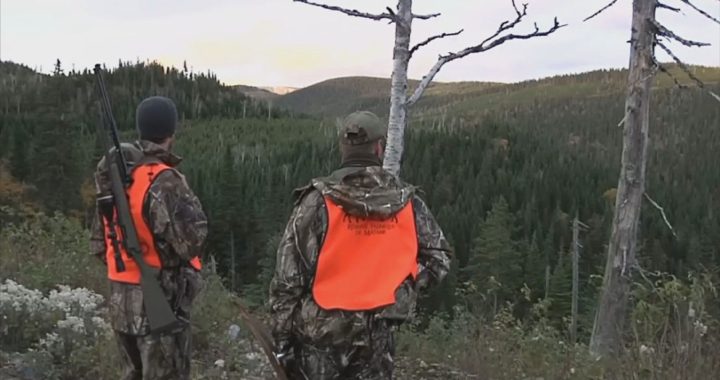
Clifford George and his grandmother Hanna Bressette in 1945 after he returned from the war. Photo: Ipperwash inquiry
Clifford George was about as courageous as they come. From the sandy shores of Lake Huron to Europe’s rugged coasts, his was a life spent fighting.
The Anishinaabe man was 21 when he left home on Stoney Point near Sarnia, Ont., to fight in the Second World War.
Once overseas, he shot at Luftwaffe bombers as they soared over the English coast during the Battle of Britain, landed on the beaches of France in 1944 and helped retake Dieppe, surviving brutal tank shelling when the Nazis retaliated.
While fighting in Italy later that year, fascists burst in where he slept and captured him. They marched him 400 km to a prisoner of war camp near Austria where he waited out the conflict through the winter.
George described the terrible ordeal to the Ipperwash inquiry in 2004.
“We starved to death. We were hungry all the time,” said George, then 84. “I had to pick bugs out of my soup.”

To quell the hunger pangs and biting cold he dreamed of home. What he didn’t know was that his home was already demolished—and not by either the German or Italian fascists. The Canadian military seized Stoney Point and turned it into Camp Ipperwash in 1942 while George was away.
As he risked being blown to bits by Hitler’s tanks, Canada’s Defence Department flattened his grandparents’ two-story house with a bulldozer.
“It was a brick home and couldn’t be moved,” he explained, “so they had to bulldoze it down.” Wrecked too were the barns and chicken coops that made up their 80-acre farm. “They were all just destroyed,” said George.
Most homes on Stoney Point shared the same fate. He told how his teacher Liz MacKinnon sat outside her home with a shotgun, daring the authorities to smash it.
“That didn’t stop them,” said George. “They just picked her up with her gun and all, and put her in her truck, and they bulldozed her place down.”
‘I found all my enemies when I got home’
Others watched as the government heaved their homes on blocks and hauled them down the road to Kettle Point. The two communities constitute the Chippewas of Kettle and Stony Point First Nation.
Hoping to get a place on Kettle Point, George contacted the local Indian agent. The man scoffed and swore. The agent stripped him of his Indian status, denied him property on Kettle Point and wanted him to live in the nearby town of Forest.
George had been unknowingly and involuntarily enfranchised. And that wasn’t even the worst of it.
The returning hero had more medals on his chest than you could count on one hand. But the military wouldn’t let him visit the Stoney Point cemetery where George’s mom lay buried. He was horrified when finally let in.

The army had desecrated the gravesite. They dug trenches through it and shot up the headstones with rifles.
“It was absolute devastation to see the mess,” George testified. “We couldn’t even tell where my mother was buried.”
He and his brothers Kenneth and Clarence wept. They were veterans too who returned shortly after their brother. For Kenneth George, finding his home replaced with army barracks so disoriented him that he spent his first night asleep in a ditch.
After that, Clifford George wondered whether his true foes were overseas.
“It was bad for us, coming home from overseas after thinking that we helped the war out,” he reflected. “I always say to myself, I found all my enemies when I got home.”
A fight on many fronts
The George brothers were among more than 3,000 First Nations, Inuit and Métis veterans who fought in the Second World War only to be met with racial discrimination, persecution and ingratitude when and if they returned to Canada.
First Nations were legally unable to vote, oppressed by the Indian Act and faced economic hardship in addition to the residential school system, which peaked in the ’40s as the war raged.
“When I think of Remembrance Day, I remember them. I remember what they went through. It’s part of the resiliency of our people,” said Jason Wayne George, who is Clarence George’s grandson and Clifford George’s great-nephew.
“Our people went and fought for a better life for them, for their families and for this country. He (Clifford) explained it to me like this: It’s still our country. Turtle Island still belongs to us and we still have a duty to protect it against all odds. We have to protect the land.”
Indigenous soldiers earned at least 18 decorations for bravery in action and an estimated 200 died. For many, the only equality they ever got was on the battlefield. It’s why Clifford George decided to return to service.
“I had no place to go. I couldn’t find a job,” George told investigative journalist Peter Edwards for his book about Ipperwash, One Dead Indian. “That’s why I went back in the army in 1950 for Korea,” George said. “There was discrimination against us.”

After he got back from Korea, George was central to the Stoney Pointers’ decades-long push to reclaim their home. The reserve was created by treaty in 1827, which the government wrongly believed the War Measure Act superseded when it stole the land.
Jean Chrétien, then minister of Indian Affairs, laid out the history in a 1972 plea to the Defence Department on the community’s behalf.
“It seems to me that the Indian people involved have a legitimate grievance. They did not agree to surrender it in the first place,” Chrétien wrote. “They have waited patiently for action. There are signs, however, that they will soon run out of patience.”
The military wasn’t interested. “The Department must retain the property at Ipperwash,” a Defence official told Chrétien. The exasperated Indian Affairs boss sent one more letter—then he gave up.
But the community didn’t. Peaceful pleas failed in the ’70s and ’80s. By the early ’90s people were ready to act.
Patience, as Chrétien predicted, ran out.

In spring 1993, a small group that included George, then 73, reoccupied the land and gave it back its Anishinaabe name: Aazhoodena. They made camp on the army base and refused to leave.
“We said we’d go in there peacefully and that’s what got us in there completely,” Clifford George testified. “We had no weapons, and we weren’t looking for trouble, except that we were there to occupy our own lands.”
“That was always his dream to move home,” recalled Jason Wayne George, who would cut wood for his great-uncle and listen to him tell stories during the reclamation.
“His whole life was a battle,” said Jason Wayne of the Elder and leader. “He was always right on the frontlines advocating.”
Later, the group erected a toll booth and charged people $5 to get to the beach. The stunt was a symbolic assertion of sovereignty, but it landed the activists in jail.
“It was the first time in a half-century that Clifford had been behind bars,” according to Edwards in One Dead Indian. “The previous time was when he had been a prisoner of war.”
Legal return of land to take 25 more years
The struggle for land back peaked two years later when the reclaimers took Ipperwash Provincial Park. The protest had moved to land under Ontario’s control, and premier Mike Harris wanted to crackdown.
Acting on bad intelligence in the darkness of Sept. 6, 1995, the Ontario Provincial Police shot and killed Clifford George’s unarmed relative Dudley George during a hasty, botched raid.
The police also clubbed a man within an inch of death and shot at a school bus, sending shattered shards of glass into the 16-year-old driver’s back.
Acting Sgt. Kenneth Deane, a member of the elite paramilitary Tactics and Rescue Unit, was later convicted of criminal negligence causing death in the Dudley George shooting.
After Harris’s ouster, the provincial Liberals called an inquiry and appointed retired judge Sydney Linden as commissioner. He was mandated to determine whether the premier had interfered with police by ordering the raid.
Read more:
‘The war is finally over for us’
Kettle and Stony Point First Nation gets modular homes for freezing members
Public hearings began in 2004, and Clifford George was there. He told his story in September that year. Those who heard it remembered Clifford as a beacon of strength and integrity.
“He was wonderful company. He was interesting to listen to. He had stories upon stories, and he loved to laugh,” recalled Don Worme, a Cree lawyer from the Kawacatoose First Nation who was counsel to the commission.
Worme led Clifford’s testimony, which he remembers almost verbatim—like it was yesterday.
“You rarely forget heroes,” said Worme, “and Clifford George was one hero that I will never forget.”
Clifford died on Sept. 30, 2005 about midway through the inquiry. But there was a chair always reserved for him as it continued, Worme said. The commissioner also eulogized him warmly.
“Clifford contributed to the inquiry, in a very public way, through the recounting of his life experience in Canada and overseas,” Linden said in a speech dated Oct. 17, 2005. “Perhaps as significantly, was a more quiet contribution by way of the fortitude and grace that obviously guided him through his life and through these experiences.”
In 2007, Linden determined Harris did not politically interfere with police. But the commissioner accepted the former attorney general’s testimony that Harris shouted, “I want the f—ing Indians out of the park.”
The provincial Liberals returned the park in 2011. It was added to the reserve in 2020. But the former Camp Ipperwash land is another story.

Band council and the federal Liberals signed a final settlement agreement in 2016 that requires the military to remediate the land before it can be legally returned.
The deal transferred $95 million to the First Nation, but the military agreed to pay for the cleanup. It’s expected to cost much more.
George testified that he believed the land was contaminated with nuclear waste, mustard gas and that canisters of nerve agent were rolled into a small lake.
Eleven per cent of the unexploded bombs that lurk beneath the ground had been cleared and 17 per cent of the environmental cleanup was done as of May 31, 2019, according to internal federal government documents obtained by APTN News.
The Defence Department still “holds legal title” to the territory it stole in 1942, according to the documents.
“We anticipate completion of the clearance and remediation activities will take another approximately 25 years,” the department said in a statement. “However, the transfer of the land will take place in parcels, as areas are cleared.”










